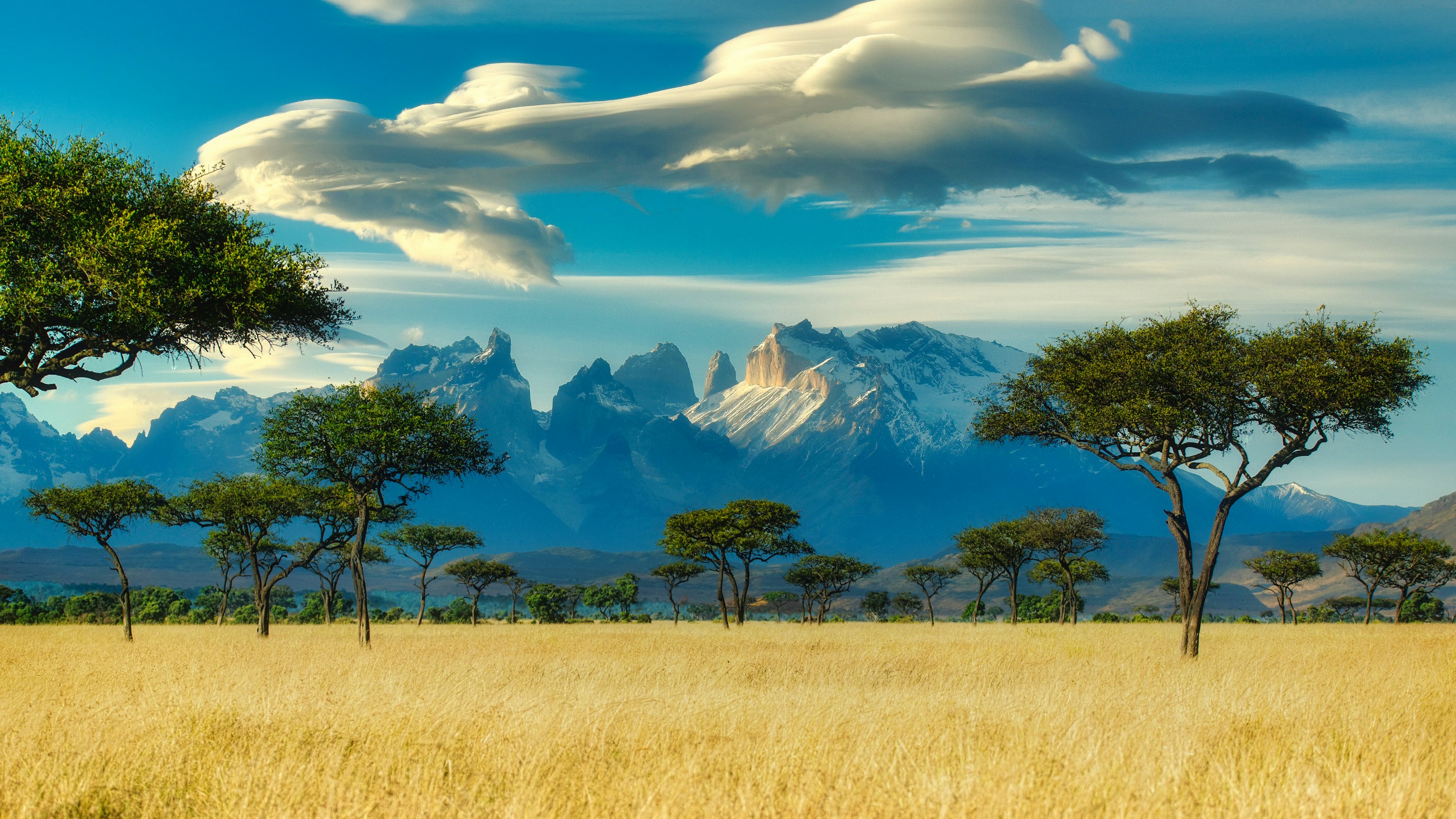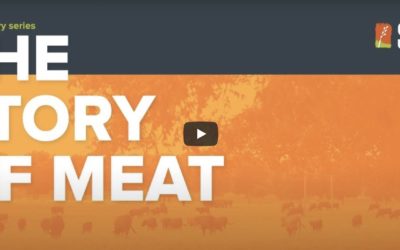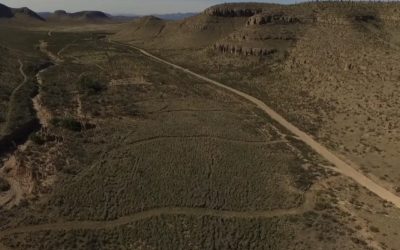The Function of Time in Environmental Recovery
Understanding the grass and grazer relationship
NOTE: this article was originally published to ACHMonline.org
A deep dive into a Holistic Management key insight
Understanding how TIME affects overgrazing (environmental damage), rather than animal numbers is one of the Four Key Insights that Allan Savory describes in Holistic Management, A common sense revolution to restore our environment. These four insights help us in our understanding of the natural world. In this series of blogs, I plan to dive deep into each of these insights. In an attempt to better understand where conventional thinking has got it so wrong.
The belief that too many animals causes environmental damage
I understand how we can believe that too many animals can cause environmental damage. It’s easy to see, for example, an elephant feeding on a tree that it has pushed over. Then we look around and see other pushed-over trees and conclude that there are too many elephants. We believe what we see. For thousands of years, people believed if the land was being damaged by animals it was because there were too many of them.
In his TED talk, Allan Savory explains this exact example. As a government ecologist, he observed damage in national parks by elephants and easily proved there were too many because scientists as humans interpret data to fit their scientific beliefs. The government at the time gathered a team of scientists to evaluate his research. They, too, concluded that there were too many elephants. After that, the government subsequently culled thousands of elephants, Allan observed environmental damage had not reduced but had in fact increased. He understood then, that there was more to this process than what was known and it required more research to understand what processes were at play.

Elephants in northern Kruger, South Africa
Understanding the grass and grazer relationship
There were similarities between his experience with the elephants in the national parks and what Allan saw on cattle ranches, where reducing the number of cattle did not prevent individual plants from being overgrazed. In thousands of published papers about overgrazing none ever defined what overgrazing was. Clearly, land cannot be overgrazed only plants can. Allan looked at the plant physiology research and it became possible to define the overgrazing of grass plants. So let me look at that first, and then what it teaches us about over-browsing of non-grass plants, such as trees and shrubs. To explain what overgrazing of a grass plant is, let’s follow a healthy grass plant through to the point where it is overgrazed.
Plants grow by capturing sunlight energy and then converting it to usable energy for growth. Perennial grasses, unlike many woody plants, tend to store energy in their roots, crowns and stem bases to enable them to live through the non-growth time of year, rather than in the above-ground part of the plant so let’s look at a general perennial bunched grass. When a cow, for example, grazes a plant severely which most large herding grazers do, it removes a high percentage of the plant’s leaves.
The plant has now lost its ability to convert sunlight energy for growth but over millions of years has evolved to simply stop the growth of roots and root hairs letting them die and moving the energy from them to the leaves and enabling them to start growing again. And when the leaves have grown enough the plants also begin re-establishing new roots and root hairs till the roots are fully restored.

A healthy grass plant being grazed and then recovering.
So what is overgrazing?
If for any reason the leaves are grazed off again severely before the roots have recovered, that is overgrazing. If the process repeats, it further kills off more roots, which are again trying to grow leaves. The point of weakness is when grass growth is taking place using energy from sacrificed roots. Sadly, we call this source of energy for growth, root reserves. While there is evidence of some grasses holding energy in the crown or lower stem bases, there is little evidence of reserves in the roots which are being sacrificed to provide the energy. That is overgrazing and if we had to define it, Allan has often said it would be excessive “grazing” of the plant’s roots.

So overgrazing occurs when an animal takes a second bite of an individual grass that is growing from sacrificed roots, that is trying to grow leaves. Overgrazing affects individual grass plants from being grazed by individual animals. So with this understanding, we can say that a single animal given enough time can overgraze individual grass plants on huge tracts of land.
So over millennia grasses and large grazing animals co-evolved in nature’s synergistic manner and grazing was beneficial and good ensuring that sacrificed roots provided abundant organic matter deep into the soils routinely as animals grazed above ground. Now, this makes some sense because almost all large herding grazers do not nibble leaves like a duiker or grysbok but feed by the mouthful grazing plants severely and while veld management or range scientists condemned severe grazing it was natural and beneficial. And that helps us understand why the deep grain-growing soils of the world are former grasslands that evolved over millennia with a vast number of grazing animals, not former forests with few herding animals.
When does overgrazing occur and does it have similarities with over-browsing?
So, overgrazing occurs when an animal takes a second bite of an individual grass that is still growing with energy from its roots and not from its leaves. There are two situations where this can happen: Firstly if the animal stays in an area so long that a bitten grass plant starts re-growing and is bitten again; and secondly, if the animal returns too soon to a previously grazed area and grazes plants that haven’t yet fully recovered. In either case, the grazed leaves were still mainly growing on energy from sacrificed roots and thus in effect the roots were being “grazed” and steadily reduced weakening or killing the plant.

Giraffes in the Karoo, South Africa
Over browsing, which involves woody plants being damaged by browsing animals, although not involving sacrificing root growth, has a management similarity in that it occurs not because there are too many animals, but because they browse leaves and buds on stems too frequently to allow normal growth. This we commonly see as “browse lines” where there is a clear line above the ground where no leaf or twig can grow in reach of goats, impala, elephants, kudu, etc. Or we see it in “hedging” where shrubs look like frequently trimmed hedges, or the tops of trees look like that when giraffes are over-browsing them.
How nature minimizes overgrazing
When I did the deep dive into the predator-prey relationship in my last blog, we looked at what makes herding and grazing animals move and why. I make the distinguished factor at herding animals because some grazing and browsing animals do not form herds. Both grazing and browsing small herbivores (For example duiker, klipspringer and steenbok) are generally solitary and do not move out of small home ranges. They nibble leaves whether woody plants or grass and thus tend not to graze or browse severely and are self-regulating populations, in that they do not just breed and breed and breed like their herding cousins. They avoid predation by stealth and speed and chased by predators they simply circle and return to their small home range.
The local movements of herds of animals within their home ranges are heavily influenced by avoiding eating grass that they have soiled with their dung and urine. No species, including humans, like to feed on its own faeces and urine. So they constantly move to avoid fouled feed until when weathering in sun and/or rain has freshened the ground. cleaned they will only return once all evidence of their dung and urine has disappeared.
By avoiding soiled grass, grazing animals tend to avoid the two points where overgrazing occurs – by staying too long, or returning too soon. Now, this is a generalization of the process, but it does show how beautifully nature has worked things out.

Managing to minimise overgrazing
When we look at this insight, we can understand what causes continued damage to individual plants and how it affects their long-term health and eventually the health of the environment. We can only manage the time that animals have access to individual plants and in so doing we can minimize the grazing while roots are being sacrificed to provide energy. In so doing we minimize overgrazing mainly which does more damage to the four ecosystem processes than over-browsing does. This simply involves planning the time that animals have access to the plants to ensure adequate root recovery, particularly of perennial grass plants that provide most ground cover both with their bases and litter.
Understanding terms
Grazing period: is the time cattle or any animal, is within a paddock or area. Grazing periods should generally be short to avoid animals biting plants while growing on energy from roots.
Recovery period: The period needed for roots to recover from a severe graze, they are generally longer. Animals should only return once the plant’s roots have adequately resumed growth from the energy provided by leaves.
Note: Remember grasses don’t have root reserves, they are sacrificing roots for leaf re-growth.
The Dimbangombe example
On Dimbangombe, we holistically plan our grazing and our land. So we have created 10 large virtual or unfenced paddocks. These planning processes allow us to manage our cattle knowing that we have proactively planned for adequate recovery no matter the daily growth rate of the grass in the paddocks. And we do this by herding our cattle.
We acknowledge the fact that in our large paddocks, there would be areas of better and poorer rainfall effectiveness (also aeration) and that this affects the growth rate of plants. So, within our 10 paddocks, there will be varying growth rates during a season. Our herders move into and out of any paddock generally based on our grazing plan (HPG) which has ensured a long recovery of at least two months, this allows more than enough time for individual roots to recover from any grazing.
Our Grazing period could be anything up to ten days or more within a single paddock. 10 to 14 Days would be far too long for any severely bitten plant, because the cattle would still be within the paddock by the time the grass and roots start to regrow, especially in the growing season. To avoid this problem, our herders follow a rule that while they are in any paddock they should try not to graze any area of it for more than three days (some overlap we don’t mind and cannot avoid). In this manner with only ten large virtual paddocks and herding, we ensure at no time should an average grass plant be grazed for more than 3 days (too short a period to overgraze) or be re-grazed before two months (adequate for root recovery whether growth is fast or slow).

The Dimbangombe map
On fenced properties, with the same number and size of paddocks, this would not be possible. As the cattle would be left to roam on their own within the paddocks. They would inevitably stay too long and bite grass that’s growing leaves and roots.
To avoid this situation a rancher on a fenced ranch would have to monitor the grass growing rates constantly and move the cattle out of the paddock before the grass regrowth starts. If that is within 3 days and he only has 10 paddocks, within 30 days he will run out of paddocks because he will be returning to the first paddock within the grass recovery period.
To avoid this problem, many more paddocks would be required, in addition to the monitoring of grass growth rates and monitoring and controlling the grazing plan. It would require planning for the longest recovery and grazing periods possible and then dropping to the minimum recovery and grazing period, during times of rapid growth. This requires that the rancher is constantly monitoring the grass recovery periods, to know when to move.
Fences serve three purposes in a cattle ranch context, they demarcate boundaries between paddocks, prohibit the movement of the cattle from one paddock to the next and if they are secure, protect the herd. We find that herders serve these functions better and in addition add another level of protection through constant observation of our herd, counting the animals twice a day and constantly observing for illness and disease. As a result, we do not have the burden of fence infrastructure costs, or maintenance costs.

The Dimbangombe herd
How we plan and manage the time animals have access to plants and the subsequent recovery of the plant (and their roots, in the case of grasses) has a direct impact on the plant’s health. When plants are healthy, they are better able to catch free sunlight more effectively. Through regenerative agriculture, that energy can then be turned into food, fiber and fuel while improving the ecosystem processes.
Through each of these deep dives into the Holistic management key insights, we are filling gaps in our knowledge of how nature functions. As a reminder, our ecosystem does not function in parts and even though I look at each insight in isolation, they are deeply connected with each other.
In our next blog in this series, I will explore the brittleness scale and how important that is when it comes to selecting the tools available to us, and their likely effect on the land we are wanting to regenerate.
—
For more posts like this, in your inbox weekly – sign up for the Restoring Diversity Newsletter




